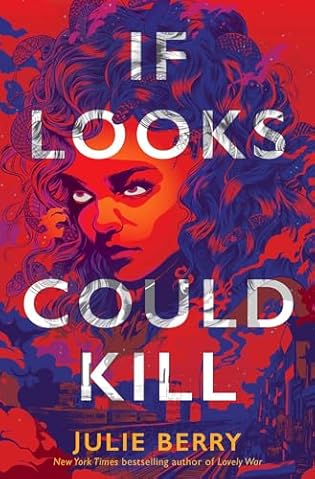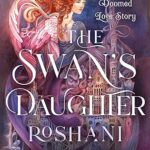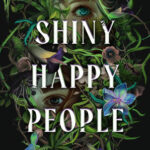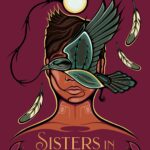
Author Interview: If Looks Could Kill by Julie Berry
Jack the Ripper versus Medusa. It sounds like the setup for a dark joke (or a nightmare) but in Julie Berry’s If Looks Could Kill, it becomes a fierce, feminist showdown you won’t soon forget. Set against the gritty backdrop of 1888 Manhattan, this genre-blending thriller weaves together mythology, true crime, and the raw power of female friendship. We caught up with Julie to talk about how she brought serpents and salvation to the Bowery, why unlikely alliances make the best stories, and what it takes to make readers laugh, wince, and cheer, sometimes all in the same scene.

If Looks Could Kill
by Julie BerryPublished by: Simon & Schuster Books for Young Readers
on September 16, 2025
Genres: Mystery, Mythology/Folklore, Thriller, Young Adult
Bookshop
Goodreads
From Printz Honor–winning and New York Times bestselling author Julie Berry, a true-crime-nailbiter-turned-mythic-odyssey pitting Jack the Ripper against Medusa. A defiant love song to sisterhood, a survivors’ battle cry, and a romantic literary tour de force laced with humor.
It’s autumn 1888, and Jack the Ripper is on the run. As London police close in, he flees England for New York City seeking new victims. But a primal force of female vengeance has had enough. With serpents for hair and a fearsome gaze, an awakened Medusa is hunting for one Jack.
And other dangers lurk in Manhattan’s Bowery. Salvation Army volunteers Tabitha and Pearl discover that a girl they once helped has been forced to work in a local brothel. Tabitha’s an upstate city girl with a wry humor and a thirst for adventure, while farmgirl Pearl takes everything with stone-cold seriousness. Their brittle partnership is tested as they team up with an aspiring girl reporter and a handsome Irish bartender to mount a rescue effort, only to find their fates entwine with Medusa’s and Jack’s.
Interview with Julie Berry
Jack the Ripper versus Medusa is not a sentence we expected to say, but now we can’t stop thinking about it. What inspired you to bring together mythology, true crime, and a powerful sense of feminist vengeance in this bold, genre-blending story?
I wish I could say that this curious cocktail of ideas burst upon me in a creative flash, but it meandered my way in its own sweet time. After writing Lovely War, I didn’t feel done with Greek mythology, but I didn’t want to write another story narrated by a god just yet. I shifted my attention to mythical monsters. After spending time afresh with Homer, I fixated on Medusa (as one does). I’d chosen New York City during the Gilded Age as my setting. A throwaway mention of the Bowery in an old Jim Croce song (“You Don’t Mess Around with Jim”) made me curious about that storied neighborhood, so I started researching the Bowery. On the Medusa front, I knew her chief job would be vengeance upon men who harm women. That left a depressingly large list of offenders, and I don’t actually believe indiscriminate revenge, nor in perpetuating cycles of violence. So for my story to work, I needed a villain unambiguously worthy of the special brand of punishment an angry Medusa might wreak. When my Bowery research revealed that one brief occupant of that neighborhood was a credible suspect in the Jack the Ripper investigations, who fled to NYC from London after the last of the “Canonical Five” murders, it was a eureka moment. And here we are.
You’ve always written unforgettable female characters, and this cast (Medusa, Tabitha, Pearl, and more) feels like an entire Greek chorus of survivors and heroes. What was it like building this sisterhood from such different walks of life, and which character surprised you the most as you were writing?
Oh, thank you for that. I’m particularly interested in the friendships that form between girls and women, and especially those that flourish after rocky starts. The differences between Pearl, Tabitha, Freyda, and Cora are pretty stark, but it’s on the jagged cliffs of those differences that story tension and friend chemistry (fremistry?) can find a foothold. I loved getting to know these girls as people but even more so as pairs and as a team. Tabitha’s way of looking at the world, and of bearing both her heart and her wit upon her sleeve, were a never-ending delight to discover as I wrote. But it was Pearl who really surprised me in this novel. I thought I had her number early on – churchy, prim, self-righteous, and judgmental. But there’s more, so much more, to her past which lends credence and poignancy (or so I hope) to her fervent intensity. I ended up adoring her.
Your stories have a way of mixing humor, horror, and heart all in one breath. How do you approach writing scenes that make readers laugh, flinch, and feel deeply without missing a beat?
I always hope to write immersive stories that help readers feel the gamut of emotions. I’m not sure that I have any special approach to writing in this way, other than to try to write as truly as I can, meaning, writing the most authentic characters of which I can conceive, and then remaining open to the unexpected truth of how they would actually feel and actually evolve and actually surprise themselves and others in the face of the story’s circumstances. As for the combination of laughing, flinching, and feeling deeply, I suppose that’s more or less how I see life – as a rom-com punctuated with horror and despair, or a tragedy suffused with hormones and hilarity; take your pick. I do believe joy ultimately carries the day, and love endures beyond the grave, but I also know that all of our stories end with us dying. So there’s that.









